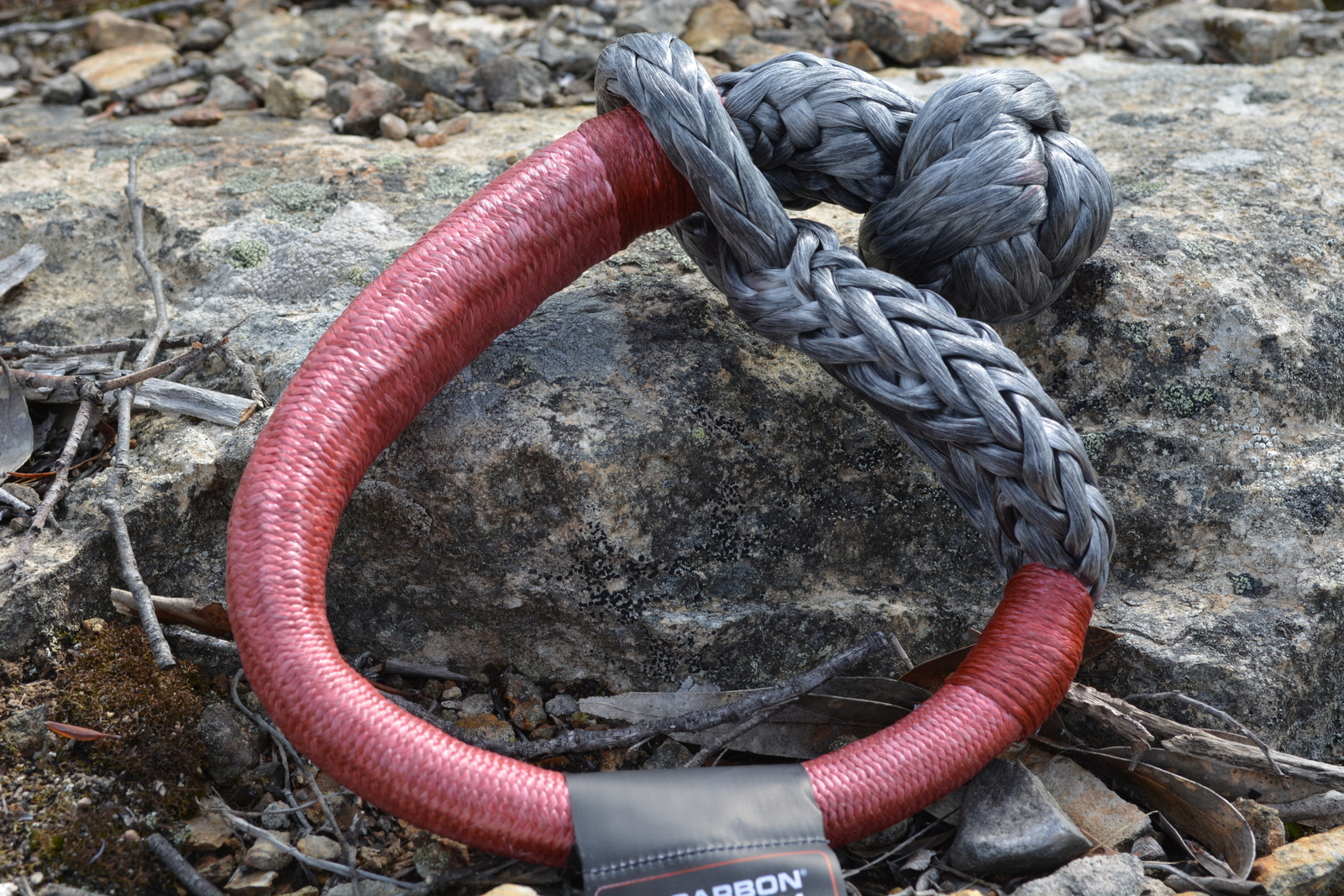Soft shackles are popular with sailors and have fast become an alternative to rated steel shackles in 4×4 recovery, but just what is a soft shackle?
Before the industrial revolution arrived in the 1800s and commercial sailing gave way to steam ships, and rope gave way to steel, sailors were tying knots and making soft shackles to connect bits and pieces on ships and boats to other bits and pieces. The death of commercial sailing saw cruise liners and cargo ships switch to steel for everything from rope replacement (wire rope), shackles and more.
But, the boom in recreational sailing has seen sailors rediscovering ropes and knots, well, the arrival of high-modulus polyethylene line (also known as high-molecular-weight polyethylene) saw the rediscovery of ropes and knots. And thus, the soft shackle has been born again. Sailors like them because they’re lightweight, waterproof, stronger than stainless steel equivalent shackles, don’t hurt if they hit you in the head or the hand, and don’t damage things like the deck, rigging, mast or sails, oh, and they float. Four-wheelers like them for the same reason.
What is a soft shackle?
Depending on how deep your pockets are the sort of soft shackle material most sailors and four-wheelers will be looking will be a high-modulus polyethylene rope which is commonly known as Dyneema. If you’re a billionaire then you’ll be looking at something like Kevlar rope (Kevlar is a brand-name for lightweight, strong rope made by DuPont); it’s used on elevators so that smaller pulleys can be used and was even used on the Mars Pathfinder.
For the rest of us, high-modulus polyethylene rope is the what our soft-shackles will be made from. This rope type is generally of an eight- or 12-strand construction and can be produced from six millimetres to 48mm in thickness. Most soft shackles used in 4×4 recovery scenarios are 12mm in thickness and constructed from 12-strand Dyneema SK75 or SK78 both are roughly the same with the latter offering slightly better resistance to stretching under sustained tension.
As far as construction goes, a soft shackle couldn’t be simpler being just a ‘strop’ with a stopper at one end (knot) and a spliced end at the other; they are more common as a single strand but some double strand soft shackles are available – the strength rating, all things being equal, is the same. One thing that those who sail add to their soft shackles that we don’t use in 4×4 recovery situations are Velcro shackle loops which help to keep the shackle from coming undone. Whether these would help in a 4×4 recovery situation we can’t say as we haven’t tested them.
Why should I care about soft shackles?
Because they’re safer than a steel shackle commonly used to connect recovery equipment, like a snatch strap. See, if the pin or any other part of a steel shackle fails when performing a recovery, the snatch strap which is under tension and will shoot through the air won’t have a lump of steel attached to it which can injure or even kill anyone in its path. Sure, being hit in the head by soft shackle snapping will still hurt but it’ll hurt a lot less than a piece of steel being flicked through the air at speeds of several hundreds of kilometres per hour. Soft shackles are much lighter than steel shackles and pound for pound are stronger than steel, are waterproof and don’t suffer performance degradation, according to their makers, even when sopping wet. They float which is great if you drop one in the water or mud.
Anything else I need to know?
Dyneema rope is considered to be highly abrasion resistant which means that it won’t be cut when run through a rated recovery point but, if there are any nicks in a soft shackle then you should bin it straight away rather than risk using it. Some makers will fit a sheath to their soft shackles as added protection against abrasion and the rope fibres crushing when bent, from recovery points and this is usually made from the same material as the shackle itself.
It’s also worth noting that most breaking strains listed for soft shackles relate to the line itself rather than, say, the knot. The breaking strain for most 12mm Dyneema rope that’s been spliced and converted into a shackle is in excess of 10,000kg. But the knot which, when tied and tensioned properly, carries similar strength properties as the rope itself is likely to be the first part to loosen and undo under extreme and sustained tension.
Should I make them myself?
Making soft shackles is all the rage with those who sail and the Interweb is filled with instructional videos on how to do it. But this is one of those DIY things that we’d advise against. Sure, anyone can buy Dyneema rope and everyone, with a bit of practice, can tie the right diamond knot and, even with a bit more practice learn to splice a line correctly. The soft shackles you’ll buy from a reputable source have to meet certain design and safety standards, for instance, commercial makers tension the knots using winches rather than tightening them by hand. And, get the splice wrong and you’ll completely ruin the structural integrity of the rope and if the shackle you’ve tied fails in a recovery situation, well, why would you risk it. So, don’t risk it, in our opinion for a 4×4 recovery situation using homemade soft shackles is not worth it.










